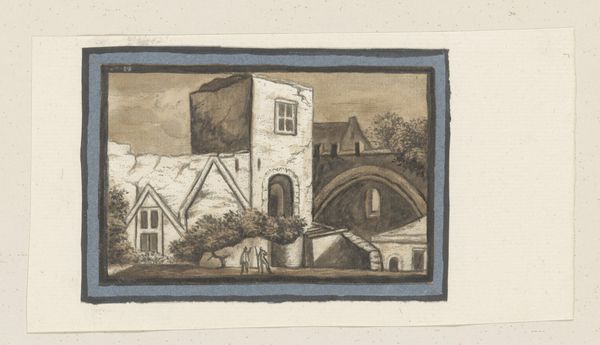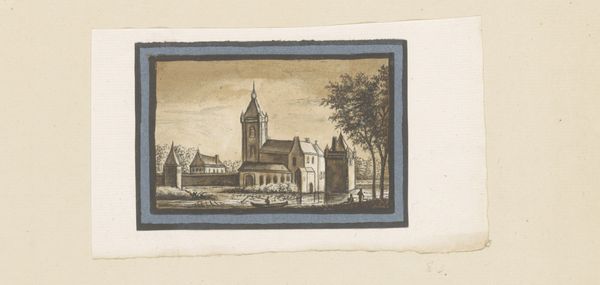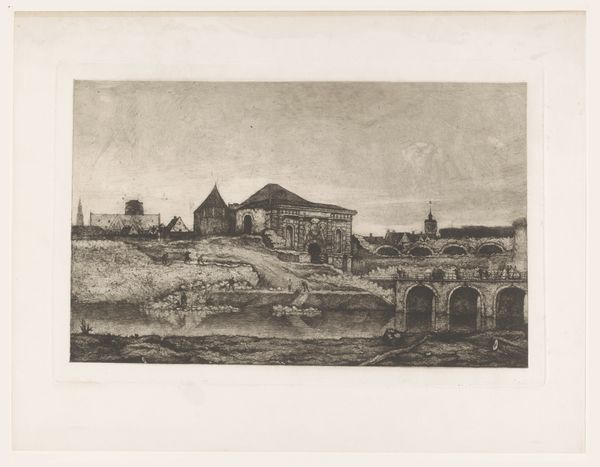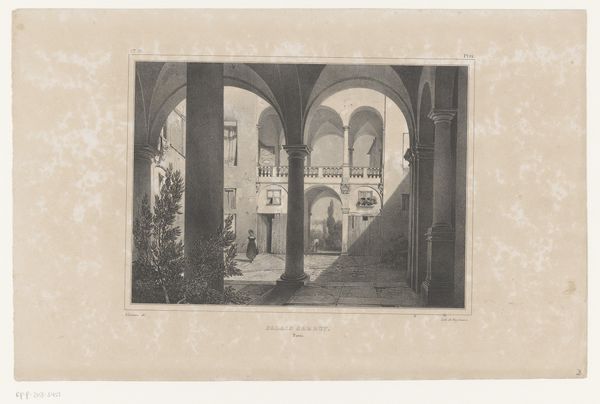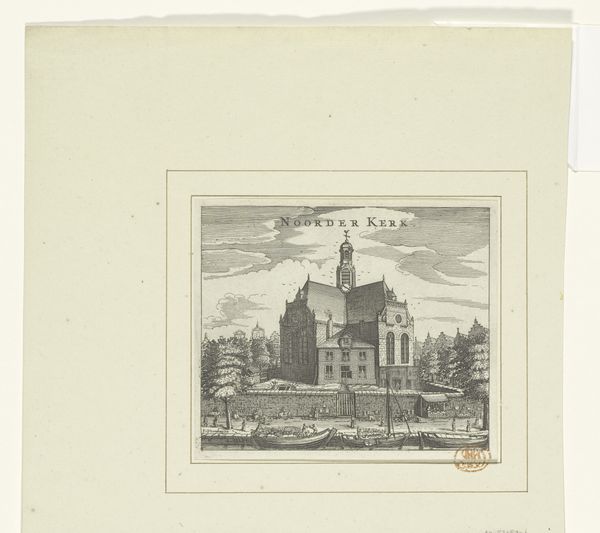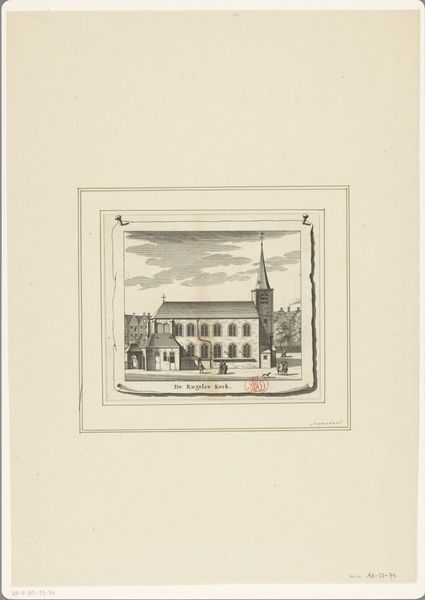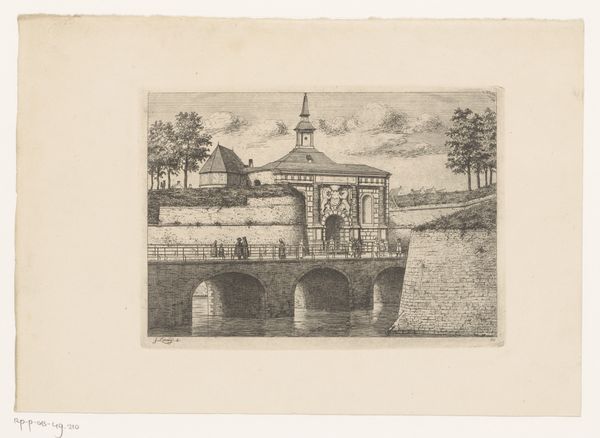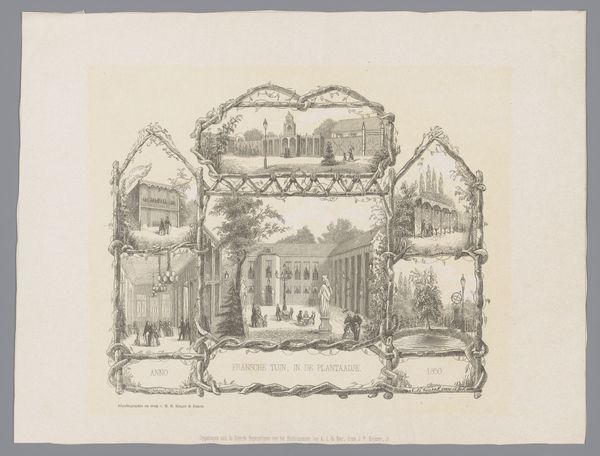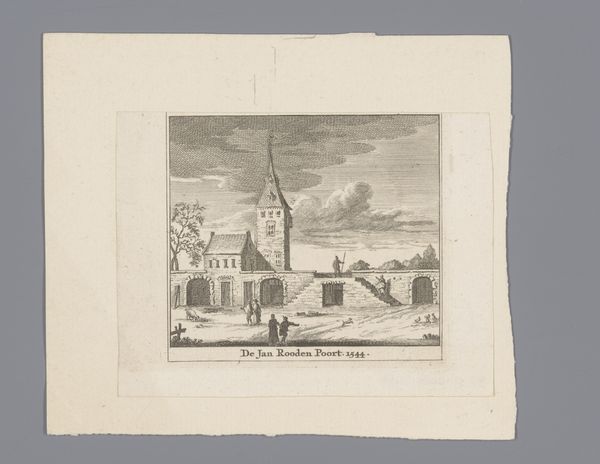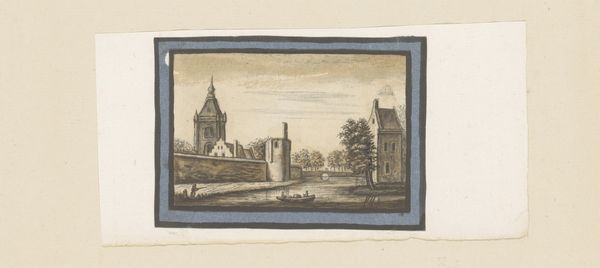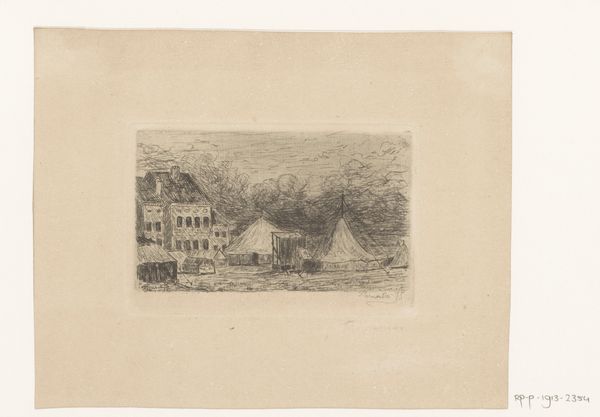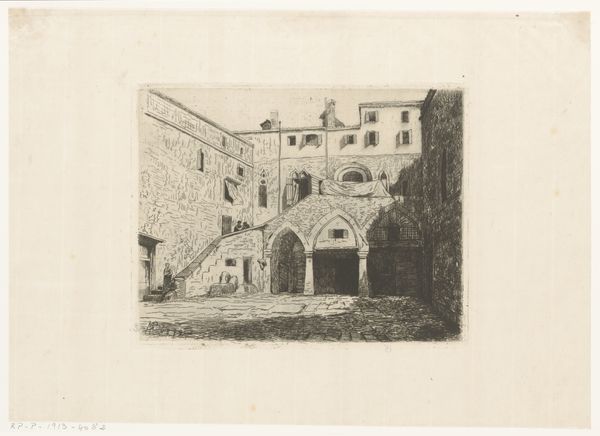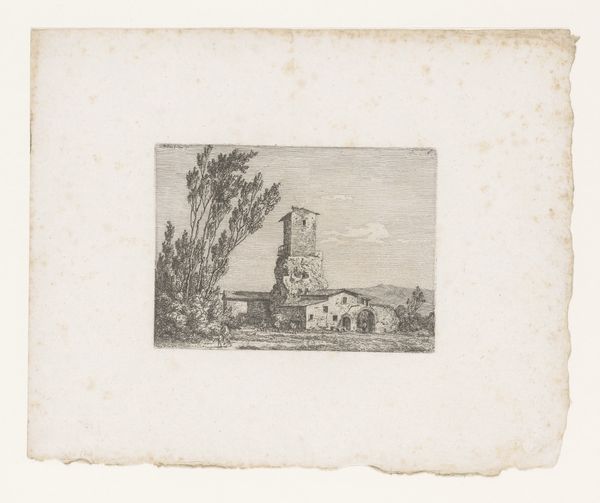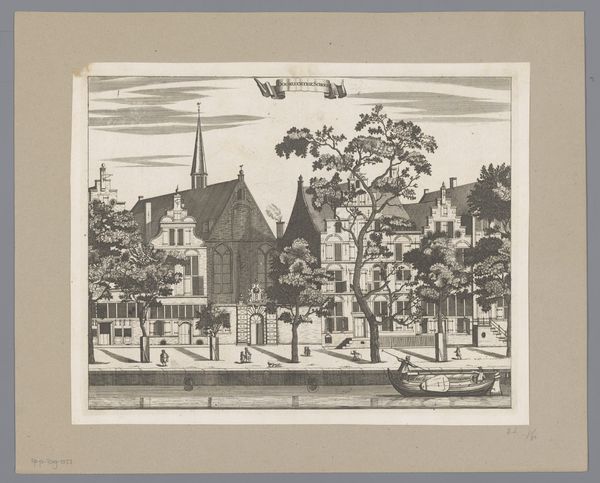
drawing, paper, ink
#
drawing
#
baroque
#
landscape
#
paper
#
ink
#
cityscape
#
watercolor
Dimensions: height 84 mm, width 118 mm
Copyright: Rijks Museum: Open Domain
Curator: Here we have Abraham Rademaker's "View of the Interior of Abcoude Castle," a drawing from around 1725. It resides here at the Rijksmuseum. Editor: It feels like a stage set. Stark, angular buildings and this huge arch looming in the background, all rendered in these precise sepia tones. I'm struck by the level of architectural detail, as if the artist was deeply invested in showing us the very stuff the castle is made from. Curator: Rademaker was quite interested in chronicling the Dutch landscape and its built environment. During the Baroque era, there was a growing sense of national identity. Images like this participate in an imagined Dutch Golden Age, even if, by 1725, the economic and political realities were shifting. And think of the two small figures walking in front – are they observers, consumers, or residents? How do they embody labour within this setting? Editor: Precisely. It is intriguing how the buildings have cracks and aged texture. What kind of labour has affected that stone over time? Look, too, at the bridge that almost seems to weigh down that section of the scene; the weight of history there. Ink on paper creates its own commentary here. The flatness juxtaposed against this three-dimensional illusion asks us to reflect on reality versus image-making itself. How can Rademaker show labor and architecture in tandem with art? Curator: I appreciate how you are attentive to the physical rendering because his drawing invites critical questions regarding who was afforded access to such leisure and the societal structures upholding such divisions. I keep thinking about power here; it feels very much tied to the structure of the city itself, not necessarily its landscape or labor, but rather the political powers at play. Editor: Yes. This material representation acts as a lens through which to view broader socioeconomic issues in Dutch history. Rademaker is building his own structure of meaning and invites us to analyze those raw materials too. Curator: His use of space encourages reflection on the enduring marks of time and inequality within our societal structures. Editor: This landscape reminds us that artwork embodies and reflects the cultural and political realities within which labor exists and operates.
Comments
No comments
Be the first to comment and join the conversation on the ultimate creative platform.
